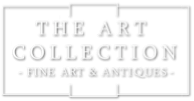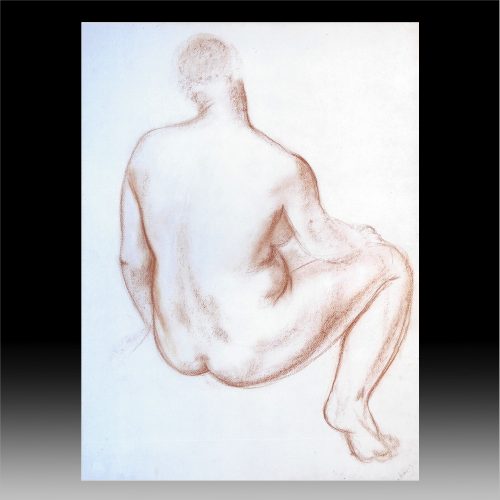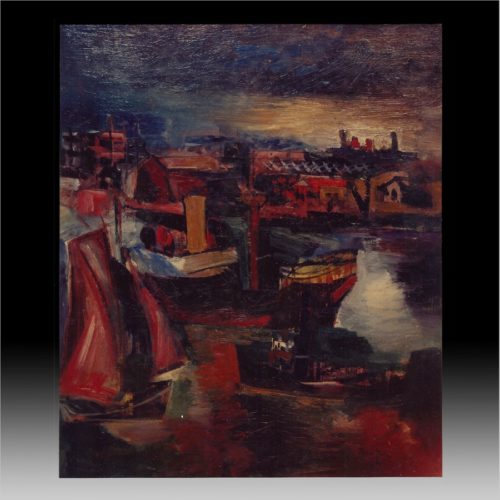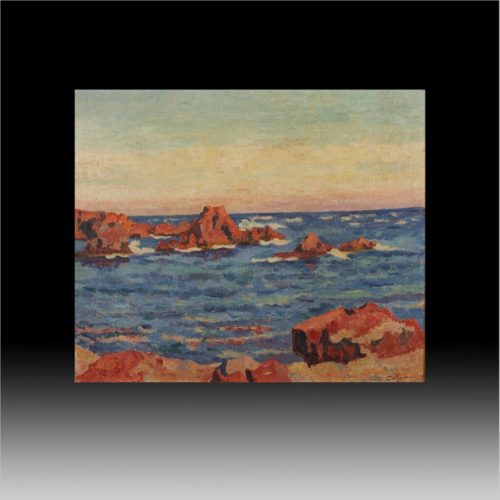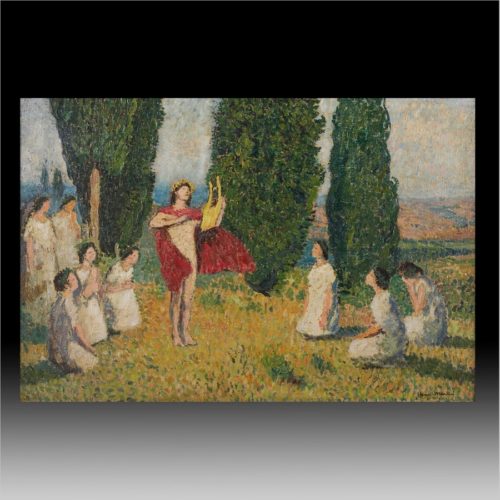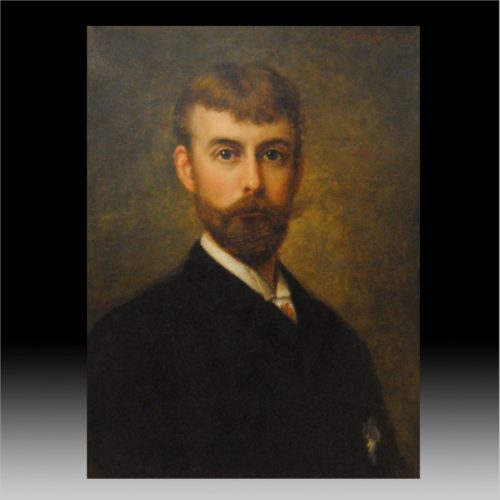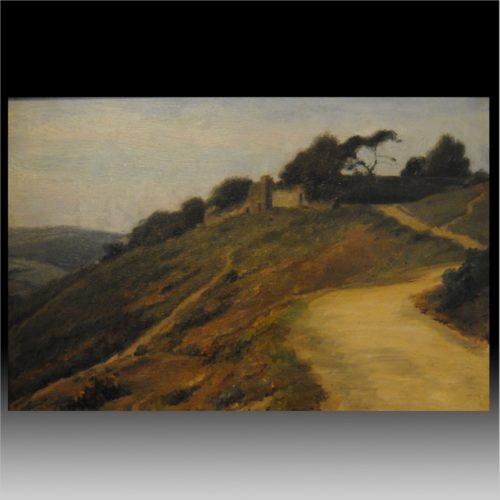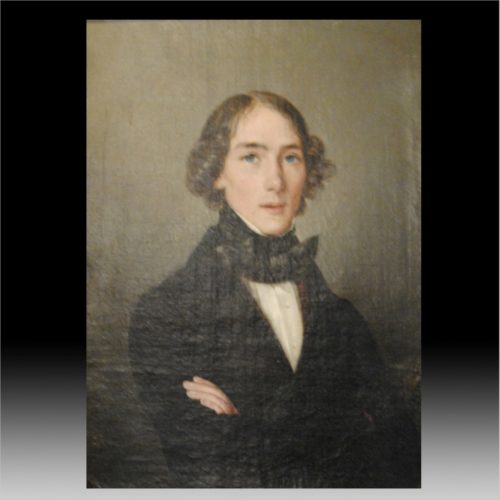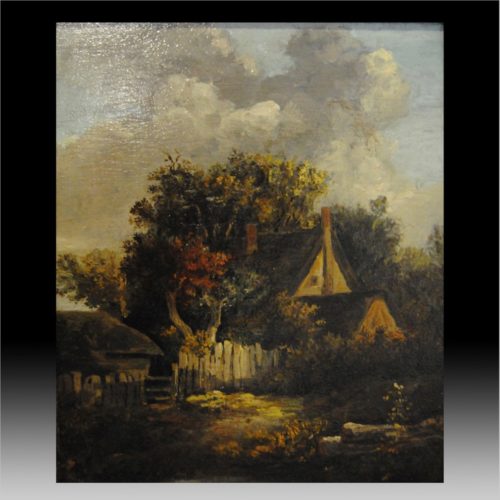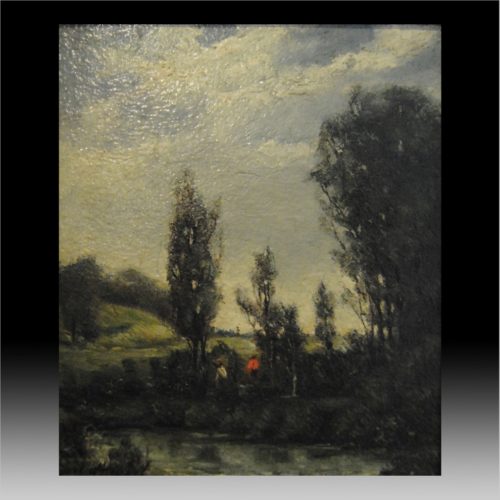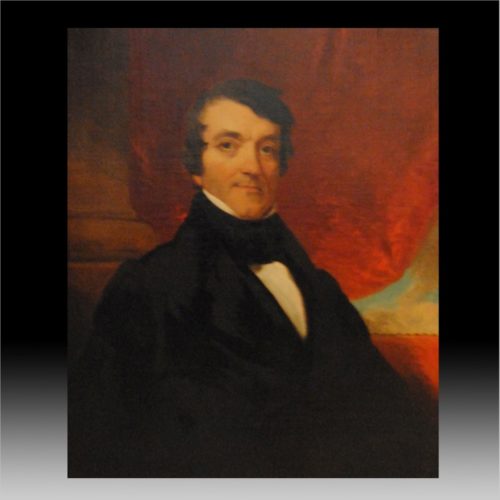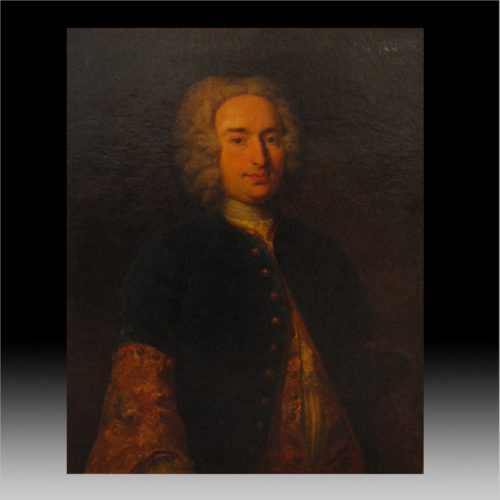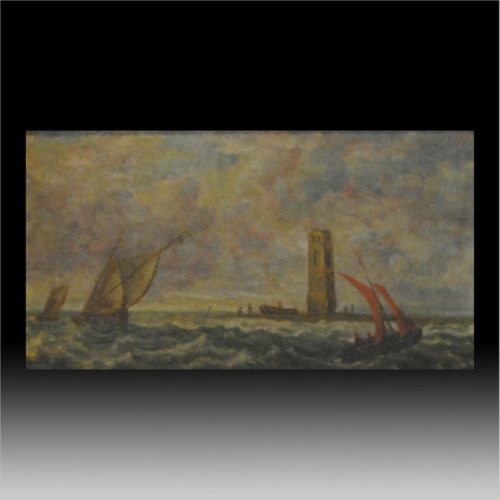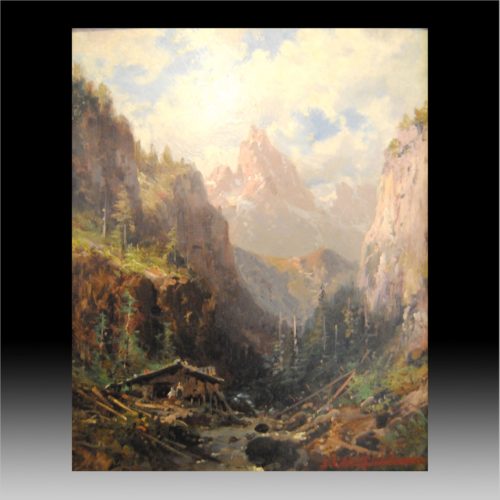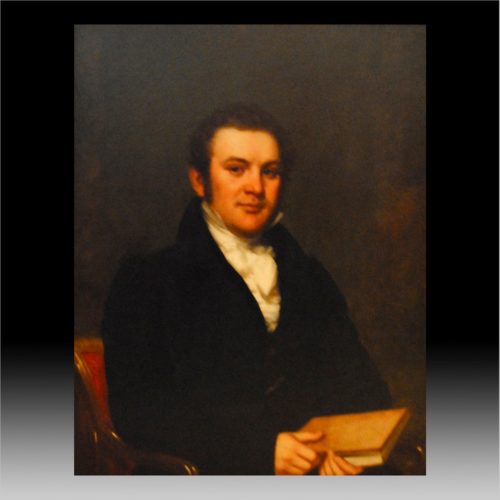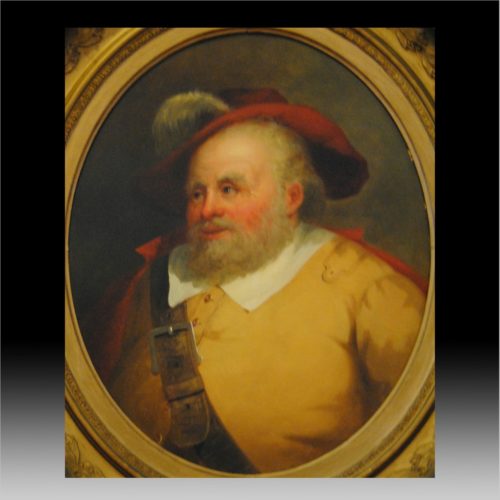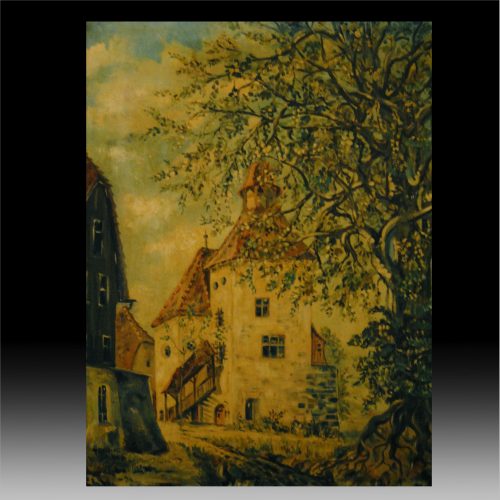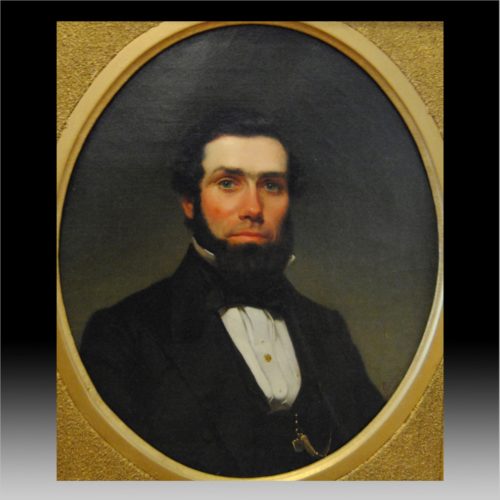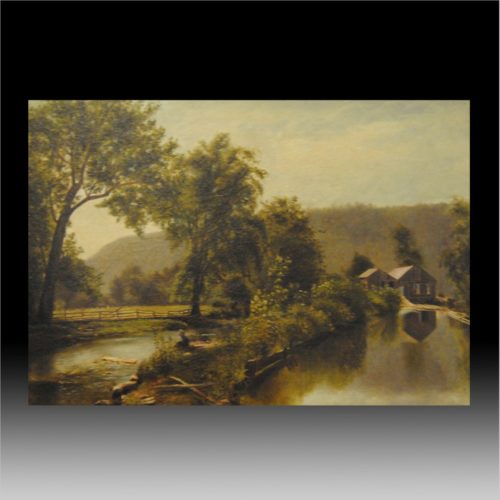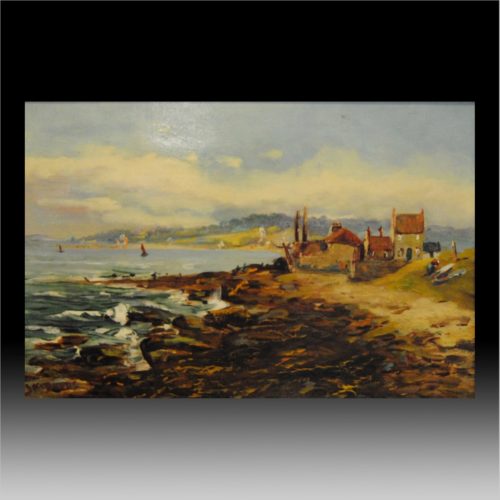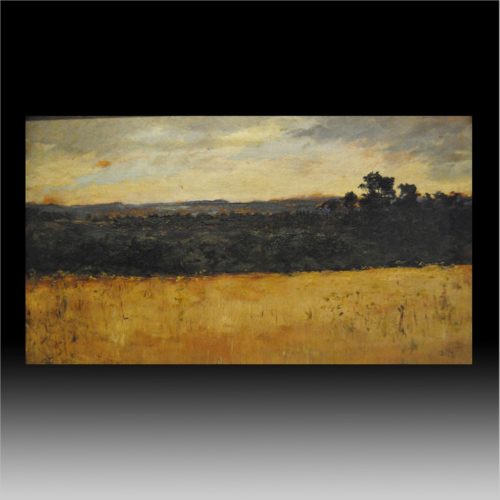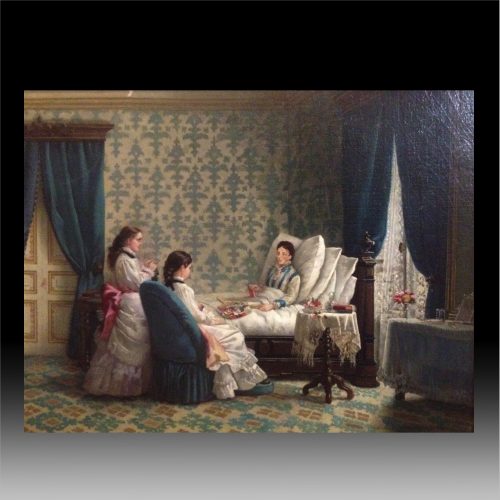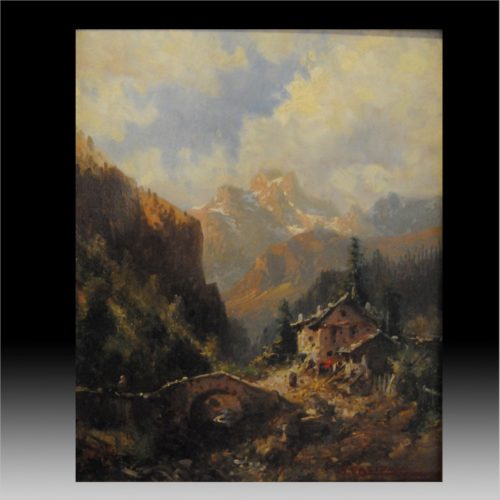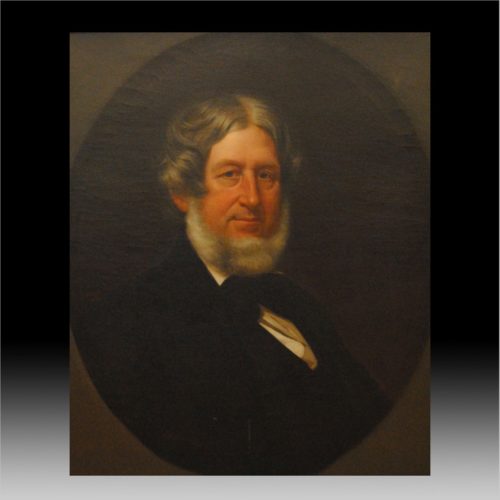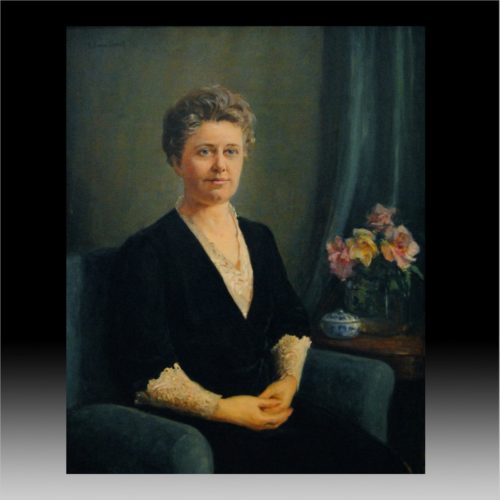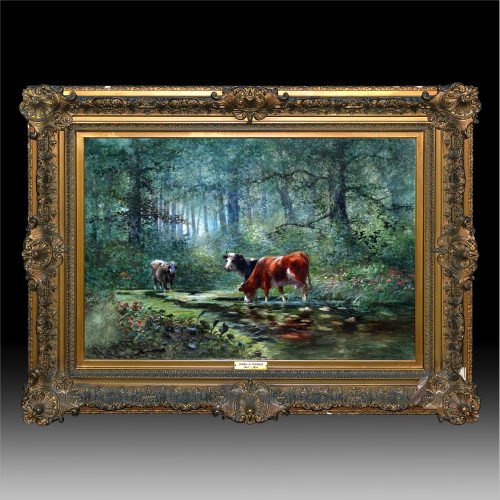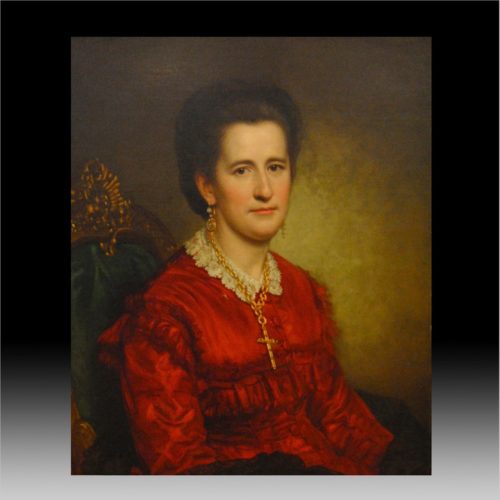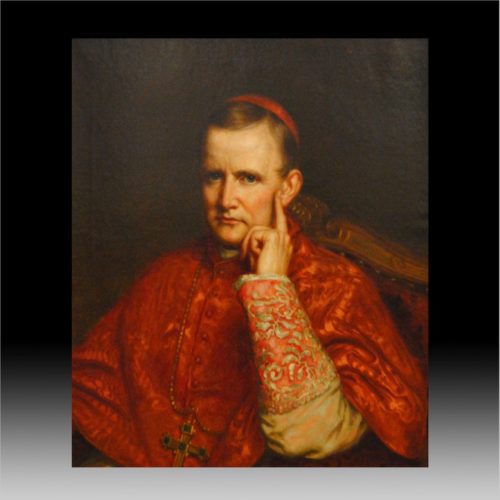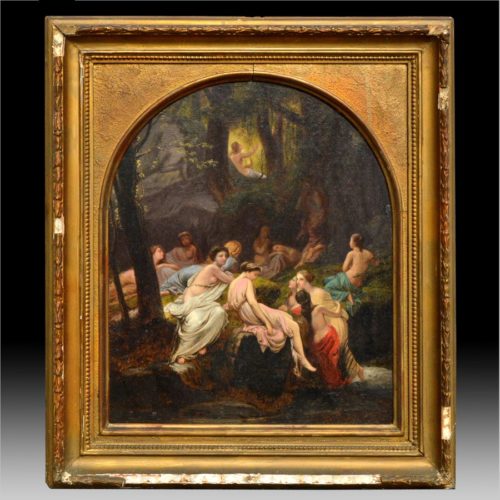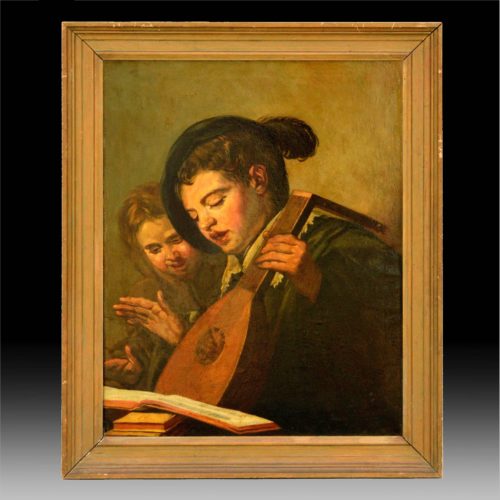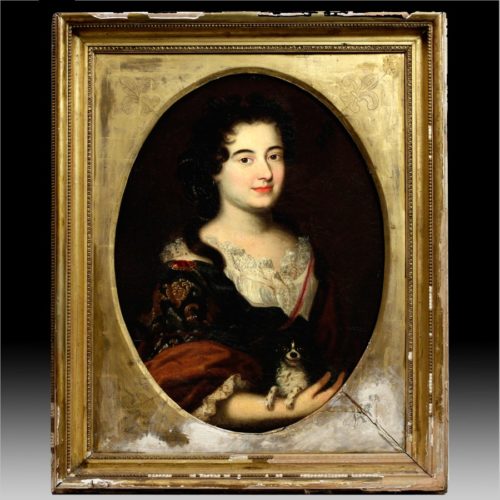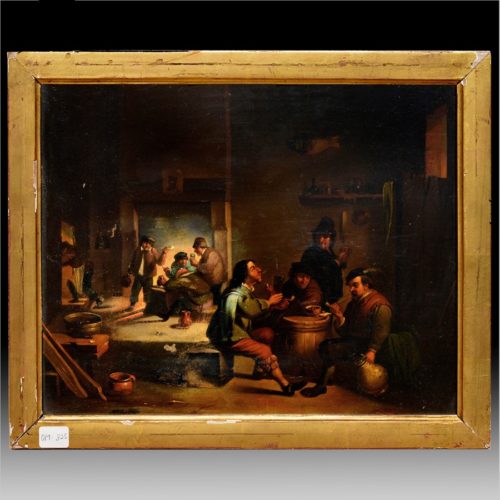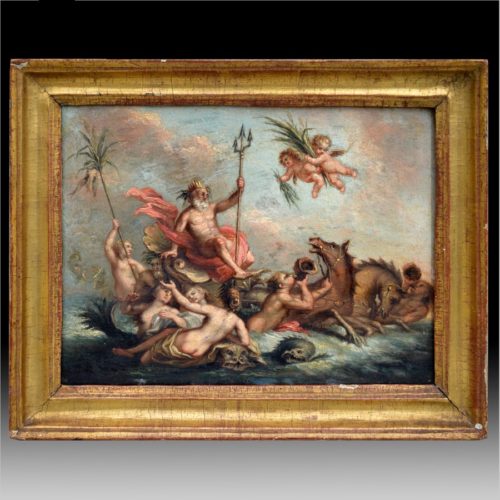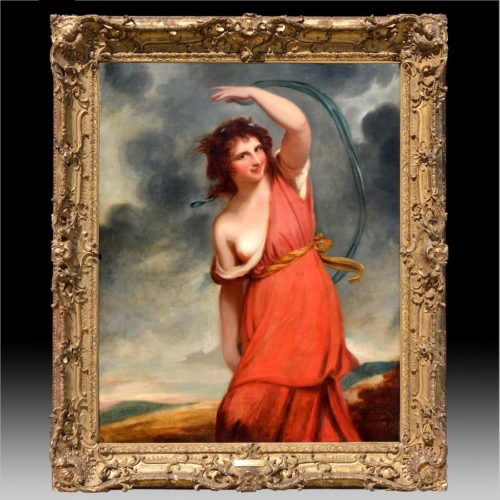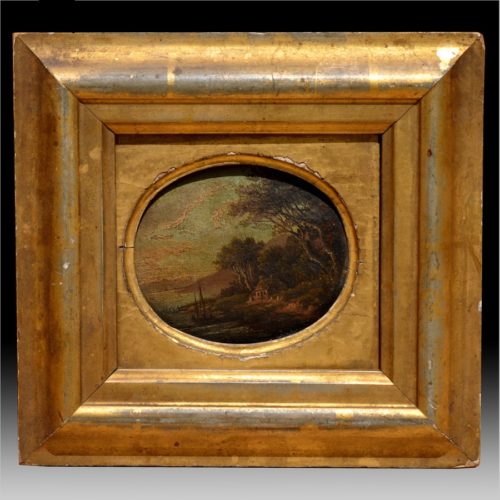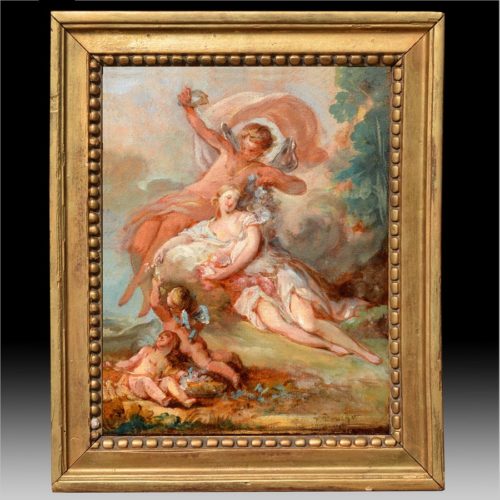-
André Derain (French, 1880-1954) “Nu assis de dos” Red chalk on paper mounted on board 25” x 18 ½” Signed bottom right COA by M. Kellermann PROVENANCE: D.G. Kelekian, NY Estate of Elizabeth Norcott Exhibited Paris, Le Petit Palais, 1937 Chicago, the art institute, 18th International exhibition of watercolors, pastels, drawings and monotypes, March-May, 1939, no. 119 Minneapolis, Art Institute, 1940
-
Jean Dufy (French, 1888-1964) “Le port” Oil on canvas 18 1/8” x 15” Painted in 1934 Signed lower right COA by L. Quesnel PROVENANCE: Max Bodner, NY Estate of Lena Wershaw, NY
-
Armand Guillaumin (French, 1841-1927) “Agay, les roches rouges” Oil on canvas 21 5/8” x 25 ¾” Painted circa 1918 Signed lower right PROVENANCE: Dr. G. Pautet, Paris Galerie Visconti, Paris Yvonne Rocchia, New York Parke-Bernet Galeries NY David Borowitz EXHIBITED: NY HammerGalleries, Guillaumin, 1961, # 23
-
Henri Martin (French, 1860-1943) “Orphee” Oil on canvas 21 ¼” x 32” Signed lower right COA by David Roy Henri-Jean Guillaume Martin (5 August 1860 – 12 November 1943) was a renowned French impressionist painter. Born in Toulouse to a French cabinet maker and a mother of Italian descent, Martin successfully persuaded his father to permit him to become an artist. He began his career in 1877 at the Toulouse School of the Fine Arts, where he was under the tutelage of Jules Garipuy (he was also a pupil of Henry-Eugéne Delacroix). In 1879, Martin relocated to Paris and with the help of a scholarship, was able to study in Jean-Paul Laurens' studio. Four years later, he received his first medal at the Paris Salon, where he would hold his first exhibition three years later in 1886. The year after he won his first medal, Martin was awarded a scholarship for a tour in Italy, where he studied the work of veterans such as Giotto and Masaccio. His 1889 canvas submission to the Salon earned him the gold medal for work that has been described as Pointillist. That same year he became a member of the Legion of Honour. At the 1900 World Fair, he was awarded the Grand Prize for his work. During this period, he became friends with Auguste Rodin. Although Martin's work as a neo-impressionist is not considered groundbreaking, his work was rather well-received, and has been associated with world-class symbolist painter, Puvis de Chavannes. Due to his introverted temperament, Martin decided to move away from Paris. After a decade of searching for an ideal home, Martin bought Marquayrol, a mansion overlooking La Bastide du Vert, near Cahors. He performed his best work in the new tranquil environment, and died there in 1943. Martin also taught; among his pupils was the American painter Nellie Ellen Shepherd.
-
George Peter Alexander Healy Portrait Oil on canvas 23” x 17 ½” @AC-NB
-
William Edward Norton Landscape Oil on canvas 1840-1896 AC5000 @AC-Albertson
-
Dunlavy Portrait Former Property of Great Grandson of A. Lincoln Oil on canvas 9 ½ x 13 inches @AC-NB
-
Follower of John Crome Landscape @AC-NB
-
Carl D’Albert Landscape Oil on canvas 8 ¼” x 9 ¼” AC5200 @AC-NB
-
American School “Portrait of Gentleman”- Estate of Lincoln Isham Oil on canvas 25” x 30” Provenance: Park Bernet 3/30/72 @AC-NB
-
Portrait Oil on canvas 25 ½” x 31 ¾” @AC-NB
-
Seascape Oil on canvas 15 x 9 inches @AC-NB
-
John Edumondo Califano 1862-1946 Landscape Oil on wood 8 ½” x 10 ½’ Worth 1,000 @AC-NB
-
American School “A Gentlemen Holding a Book” Oil on canvas 25 ½” x 32 ½” Sotheby’s L.A. 11-17-80 @AC-NB
-
George Henry Durrie American, 1820-1863 “John Henry Hackett as Falstaff” Oil on Board PROVENANCE: By descent through the artist’s family Hally L. Durrie, Santa Barbara, the artist’s great grandson Terry DeLapp, Los Angeles Mrs. George Arden, New York LITERATURE M.Y. Hutson, Geroge Henry Durrie, 1820-1863, American Wiinter Landscapist: Renouwned throughCurrier & Ives, Santa Babra, p.55, no. 51, illus. Records and personal diaries indicate that Durrie read Shakespeare and was inspired to paint Falstaff. According to Martha Hudson, “Two portraits of Falstaff are known, both listed in the record book. The 1852 painting (this portrait) is thought to be a portrait of the actor James Hackett portraying Falstaff, a role he made famous in America. Since Hackett performed in New York City as well as on tour, Durrie could easily have seen a performance. Obviously the characterization was effective because the portrait is jovial and abundant in appearance as one could hope for a Falstaff.” 17” x 13 ½” (43 x 34.3 cm)
-
Louis Heinzman (1905-…) American Streetscape Oil on canvas Signed 32 x 24
-
John George Brown 1831-1913 Portrait of a Man Oil on canvas 10 ½” x 12 ½” AC12000 AC28000 @AC-NB
-
American School- Artist: Unknown “An Old canal” 20” x 14 ¼” In 1870 @AC-NB
-
J.M. Dizikis Seashore Landscape Scene Oil on canvas 18” x 12 ¼” @AC-NB
-
Elizabeth M. Yates b. 1883, Landscape Scene Oil on wood 9 ¼” x 5 ½” @NB
-
Edwin Howland Blashfield Women Aiding the Less Fortunate 1848-1936 21 ¾” x 17” AC80000 @AC-NB
-
John Edumondo Califano 1862-1946 Landscape Overlooking House and Bridge Oil on wood 8 ½” x 10 5/8” AC3000 @AC-NB
-
John Joseph Enneking 1841-1916 Still Life with Fruits Pastel 22” x 18” @AC-NB
-
John George Brown 1831-1913 Portrait of a Man Oil on canvas 25” x 30” John George Brown (November 11, 1831 – February 8, 1913) was a British citizen and an American painter born in Durham, England on November 11, 1831. His parents apprenticed him to the career of glass worker at the age of fourteen in an attempt to dissuade him from pursuing painting. He studied nights at the School of Design in Newcastle-on-Tyne while working as a glass cutter there between 1849 and 1852 and evenings at the Trustees Academy in Edinburgh while working at the Holyrood Glass Works between 1852 and 1853. After moving to New York City in 1853, he studied with Thomas Seir Cummings at the National Academy of Design where he was elected a National Academician in 1861. Brown was the Academy's vice-president from 1899 to 1904. Around 1855, he worked for the owner of the Brooklyn Glass Company, and later he married the daughter of his employer. His father-in-law encouraged his artistic abilities, supporting him financially, letting Brown pursue painting full-time. In 1866, he became one of the charter members of the Water-Color Society, of which he was president from 1887 to 1904. Brown became famous for his depictions of street urchins found on the streets of New York (bootblacks, street musicians, posy sellers, newsboys, etc.). @AC-NB
-
Frederic Edwin Church 1826-1900 Portrait of a Woman Oil on canvas 32” x 40” Mr. And Mrs. Walker (pair of paintings) F.E.Church (1876-1975) Born in Brooklyn, NY Provenance: Sotheby’s 6/12 –15/73 lot 315 @AC-NB
-
Hugh A. Fisher 1867-1916 Cows Grazing Watercolor 34” x 25” @AC-NB
-
George Peter Alexander Healy 1808-1894 Portrait of a Woman Oil on canvas 24 ½” x 29 ½” Provenance: Richard Bourne 08/07/73 Signed top left and dated 1872 AC20000 @AC-NB
-
George Peter Alexander Healy 1808-1894 Portrait of Cardinal John McCloskey Oil on Canvas 25” x 30” Signed top right and dated SLOCT2281-127 AC16000
-
Charles François Jalabert Women in the Forest Oil on canvas Within a painted arch 39.4 x 31.8 cm S71791-209 899001-3
-
F. Hohle (early 20th Century) after Frans Hals. ‘Two singing Boys’ signed lower right F. Hohle cop and with the monogram lower left FG, oil on canvas 66.5 x 53 cm The original, on canvas, 66x52 cm, is in the Staatliche Kunstammlung Kassel. It was acquired by Landgraf Wilhelm VIII of Hessen in 1749 (see S.Slive, Frans Hals, 1974, II.fig. 44 and III.pp.15/16, no.23) CA102894-46 734506-3 @Albertson
-
Henri Gascars ‘Portrait of a Lady, half length in a blue Dress with a white Chemise and a brown Wrap, holding a Spaniel' Bears inscription on a label on the reverse ‘Mrs. Cunliffe' oil on canvas, in a painted oval 27 x 19 ½ in. 68.6 x 49.5 cm. Henri Gascar (1635 – 1 Jan 1701) (also Gascard, Gascars) was a French-born portrait painter who achieved artistic success in England during the reign of Charles II. He painted many leading ladies at court, including several of the King's mistresses, before returning to Paris. He subsequently relocated to Rome, where he died in 1701. Gascar came to England about 1674, probably at the behest of Louise de Keroualle, Duchess of Portsmouth, Charles II's favourite mistress. Gascar (or Gascard, as he seems to have spelt his name at first) was already known as a skillful portrait-painter; among the portraits already painted by him was that of Nicolas de Lafond, author of the "Gazette of Holland", painted in 1667, and engraved by Peter Lombart. The patronage of the Duchess of Portsmouth ensured Gascar a rapid success in England. His flamboyant style, contrasting with the stolid English approach, seemed to suit the frivolity of the time and he painted many of the ladies of Charles II's court. His lack of attention to detail in the likeness he made up for by the sumptuous draperies and tawdry adornments around the subject. For a short time he became fashionable, and is said to have amassed a fortune of over £10,000.
-
David Teniers ‘Topers in a Tavern Interior’ oil on white metal 10 3/8 x 12 ½ in. CL102794-244 318702-2 Price:4,500 @AC-NB
-
François Boucher 1703-1770, French “The Triumph of Neptune” François Boucher (French; 29 September 1703 – 30 May 1770) was a French painter, draughtsman and etcher, who worked in the Rococo style. Boucher is known for his idyllic and voluptuous paintings on classical themes, decorative allegories, and pastoral scenes. He was perhaps the most celebrated painter and decorative artist of the 18th century. He also painted several portraits of his patroness, Madame de Pompadour. A native of Paris, Boucher was the son of a lesser known painter Nicolas Boucher, who gave him his first artistic training. At the age of seventeen, a painting by Boucher was admired by the painter François Lemoyne. Lemoyne later appointed Boucher as his apprentice, but after only three months, he went to work for the engraver Jean-François Cars. Boucher died on 30 May 1770 in his native Paris. His name, along with that of his patron Madame de Pompadour, had become synonymous with the French Rococo style, leading the Goncourt brothers to write: "Boucher is one of those men who represent the taste of a century, who express, personify and embody it." OM-300 CL102794-139640801-2
-
George Romney 1734-1802, British “Portrait of Emma Hart, Lady Hamilton, As Mirth” Oil in canvas 56 ½” x 45 ½” 143 X 115 cm Provenance: J.C. Curwen, M.P., Workington Hall, Cumberland, by whom acquired from the artist 1st Earl of Lichfield, Orgreave hall, Lichfield Thomas Challoner, Chester, (Sale: Christie’s, London, July 10, 1897) there purchased by Thos. Agnew and Sons, Ltd., London Duven Bros, New York, by 1929 until at least 1933 C.J. Wertheimer E.G. Raphael S101091-131 1667501-3 @AC-NB 1040 2/14
-
Christian Georg Schütz (German, 1718-1791) “A River Landscape with a Boat Moored by a Cottage” Oil on board, oval 3 1/3 x 3 ¾ inches (8.6 x 9.5 cm) CL 201794-171 18841-2 @NB-1040 #92
-
JaquesNatoire with indistinct signature, ‘F Boucher’ “Zephyr Flora” Laid down on canvas 10 ½ x 8 inches (26.7 x 20.3 cm) CL102794-137 451003-2 @NB-1040 #62
